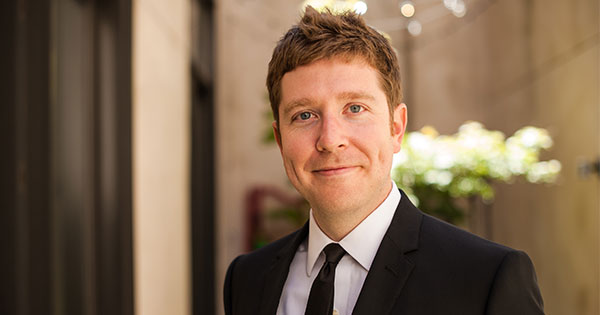
Judicial processes are far from perfect, and age-old systemic shortcomings still weigh most heavily on the weakest in our society. In his new book, Unfair: The New Science of Criminal Injustice, Adam Benforado reports recent research uncovering hidden biases against the have-nots and foresees even greater fissures of fairness in our courts.
An associate professor of law at Drexel University, Benforado cites examples in his book to bolster his reform arguments. We asked him to pose five questions about the future of criminal justice.
1. Imagine that one day we become really good at predicting who will offend. Our system in this theoretical world isn’t perfect, though. With every forecast, there is a one-in-a-million chance we’ll be wrong. Given these facts, would you support detaining a person predicted to murder a child before he has done anything? When I asked my criminal law class, only four students raised their hands. To most, it seemed profoundly unjust—something drawn from a science fiction dystopia. But is this truly fantasy or, rather, a glimpse of the world to come?
2. Predicting criminal behavior is a core part of our current legal system. Is this arrested man likely to flee the state? If so, no bail. Is this woman a strong candidate for probation or is she likely to reoffend? If a person is deemed a threat to the public because he is unable to control his behavior, it is constitutional to detain him indefinitely, even after he has served his full sentence. For most of history, these judgments have been guided by intuitions without any scientific grounding. But that’s begun to change. The most widely used assessment tool today relies on 20 factors found to predict violence, from problems of substance abuse to evidence of impulsivity to lack of personal support.
The trouble is that we’re still far from where we want to be. According to one estimate, even with our best tools more than 15 percent of the people we identify as high violence risks wouldn’t reoffend if let free. Can we expect more accurate methods in the future?
3. A true breakthrough may come when actuarial data and clinical assessments are combined with information about an individual’s brain structure and activity. Although that day may be far off, the first study using brain scans to predict recidivism has provided promising results. The researchers had inmates engage in a simple impulse control task, pressing a button as quickly as possible whenever X appeared on the screen (84 percent of the time) and holding their fire whenever K appeared (just 16 percent of the time). Those who made a lot of errors—failing to control the urge to press the button when a rare K appeared—not only showed reduced activity in the anterior cingulate cortex, an area of the brain believed to be critical to impulse control, but also were twice as likely to be rearrested on a felony charge within four years of being released.
Our longterm goal will be to build a comprehensive tool to predict future offending that can be given as a standard part of the criminal process. When that happens, we’ll face a hard question: In the interest of public health, why not evaluate all citizens?
4. Screening everyone, beginning in childhood, may provide the best opportunity to intervene effectively and avoid criminal behavior altogether. And it is worth scrutinizing our misgivings. We already give children assessments to check for learning disabilities, head lice, psychological disorders, sports talent, and various diseases. Indeed, in the wake of recent school shootings, schools routinely profile students to identity those who pose a threat.
If we are concerned about stigmatizing and punishing someone based on a mere probability of future dangerousness, the solution is not to avoid screening people; the remedy is to rethink how we treat those deemed to present a danger. So, how should society intervene once someone has been shown to have a significant likelihood of committing a crime in the future?
5. I doubt that there will be much use for criminal punishment in the centuries ahead. A small subset of the population may always require separation from the general public or careful monitoring, but not in the torturous conditions of our contemporary prisons. Most resources will go toward reducing people’s risk profiles before crimes are committed. We’ll no doubt use what we learn about environmental influences on criminality to make broad societal changes. But we’ll also intervene at the level of the individual, using everything from cognitive-behavioral therapy to dietary supplements to antipsychotic medications.
Approaches that target brain function—including deep brain stimulation techniques—are likely to be most controversial, but they may also offer hope to those who are currently hopeless, lost forever in cycles of violence or in solitary cells. Should such treatments be offered as a choice, then, or will they be required?

